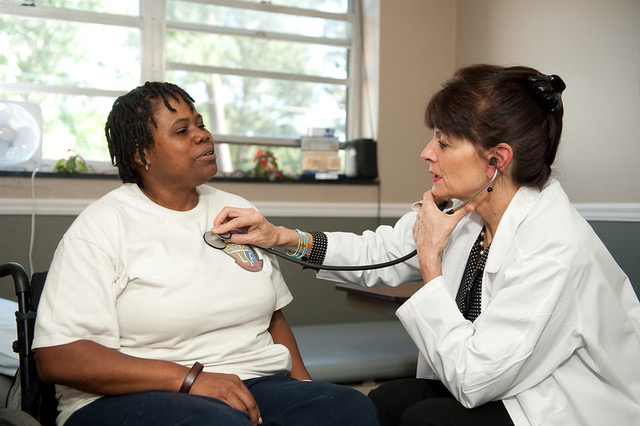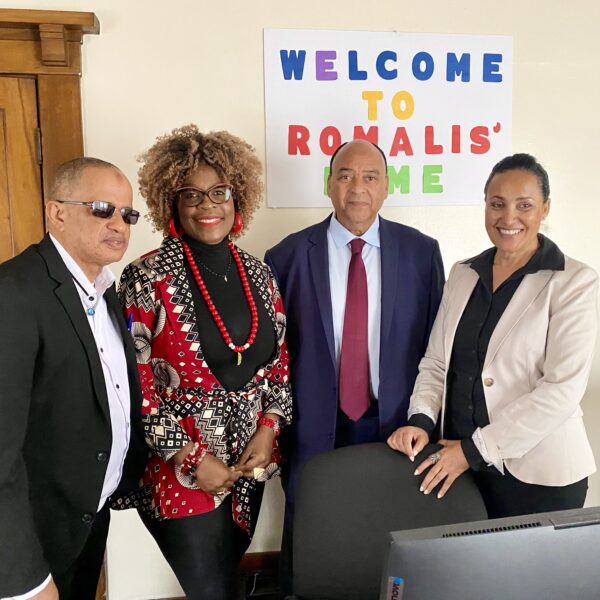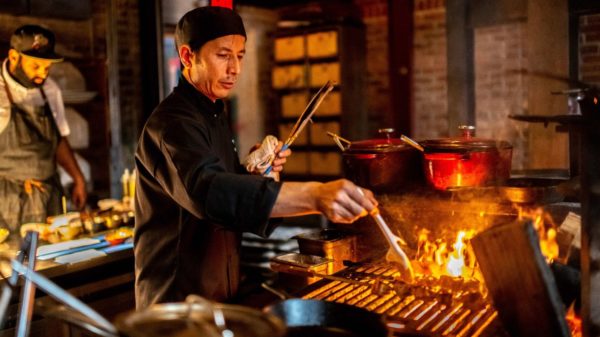Magazine, Living Well, By Julian Do, Contributor to Immigrant Magazine
Los Angeles — As soon as some states lifted the lockdown, many Americans seem to assume that it was no longer necessary to wear masks and maintain social distancing. This trend has led to large gatherings and have prompted a spike in Coronavirus cases nationwide.
The pandemic’s biggest toll, however, is still centered on the most vulnerable population: the elders, many of whom reside in nursing facilities where they are considered the epicenter for infection and deaths.
According to the CDC, 8 out 10 deaths due to Covid-19 are adults above 65 years old.
On June 12, Ethnic Media Services, with the support of Blue Shield of California, organized a special briefing focusing on the elders with these health and research experts: Dr. Tung Nguyen, professor of internal medicine at UCSF; Dr. Charlene Harrington, gerontologist and professor of sociology and nursing at UCSF; Dr. Farida Sohrabji, professor of neuroscience and experimental therapeutics at Texas A&M; Erika Hartman, chief program officer for the Downtown Women’s Center in Los Angeles; and Dr. Fernando Torres-Gil, director of the Center for Policy Research on Aging at UCLA.
The Danger of letting health safeguards down
Despite the fact that there has been an increase of about 200,000 new cases, or 10% of the total cases in just one week, according to Dr. Tung Nguyen, the country seems to treat the pandemic much less seriously than before. Even the president has not had a national briefing for a month.
Twenty-one states have reported an uptick of infection cases with 14 states experiencing their highest 7-day average, like California with over 4,300 new cases and Texas with over 4,100 new cases.
Given the rapid rise of new cases with reports that many states have experienced ICU capacity occupied by Covid-19 patients as high as 76%, researchers have concluded that the pandemic in some states is actually worsening and may soon exceed their capacity.
Dr. Nguyen and other researchers believed the recent spike is due to the fact that many states are relaxing the stay-at-home rules and numerous people are not adhering to wearing masks and maintaining social distancing.
He highlighted one study which shows that these health safety measures, absence of a vaccine, are still the best way to combat Covid-19.
Nursing facilities: epicenters of the pandemic
“Although nursing home residents represent only 0.6% of the US population, they are accounted for 40% of all the deaths in this pandemic so far,” said Dr. Charlene Harrington.
In the last two decades, as reported by Dr. Harrington, most nursing facilities (of which 70% are owned by for profit companies) have had serious quality care problems due to insufficient
number of registered nurses, inadequately trained nurse assistants, high density of patients, and numerous infection control violations.
“As a result, when Covid-19 broke out, the virus spread like wildfire at many nursing homes,” Dr. Harrington concluded.
And the danger is still out there as many nursing facilities have either still not tested or had neglected to include the staff and all the residents in the testing, potentially missing some positive patients who were asymptomatic. Furthermore, since managements are not required to provide regular health reports during the pandemic, there’s no accurate picture of infection cases and death rates at nursing facilities across the country.
“Minority residents,” emphasized Dr. Harrington, “are particularly vulnerable as they are more likely to be placed in nursing homes with the lowest quality care, staffing ratios, and management efficiency.”
She explained that caring for the residents at these nursing facilities are mostly done by nurse assistants (NA), many of whom came from communities of color. They are generally underpaid part-time staff with no insurance and sick leave, and therefore tend to work at several nursing facilities.
Given the acute shortage of PPE supplies, these NA are at risk for contracting Covid-19 and could become carriers transmitting the virus from one facility to another.
The fact that government oversight is also lacking, altogether, these horrific conditions have thrown nursing facilities into the eye of the pandemic storm.
And in the midst of the storm, continued Dr. Harrington, the nursing home industry has successfully lobbied 20 states to grant them immunity from negligence due to the pandemic when much of the problems and ill preparations existed before the pandemic.
Family visit restrictions, instituted by facility management, have also worsened the health of many residents when they don’t get to see and interact with friends and relatives. Elder advocates and researchers like Dr. Harrington are lobbying state governors to let family members, under health protocols of wearing masks and gowns, visit their loved ones.
Pandemic exacerbates depression among elders
During this pandemic, a large number of elders have experienced depression caused by two factors: social isolation and infection of Covid-19.
For many elders, social isolation, even without an infection, can be devastating, said Dr. Farida Sohrabji.
To guard against infection, many elders have to be socially isolated. However, according to Dr. Sohrabji, this situation can exacerbate their loneliness and increase autoimmune diseases, which in turn could trigger a depression and lower their immune systems. Suddenly, these elders get trapped in a vicious cycle and become even more susceptible to Covid-19.
This circumstance describes the situation of many residents at nursing facilities, Dr. Sohrabji noted. She explained further that after a while, these elders’ health would deteriorate because of
the linkages and chain reactions between social isolation, depression, and lower immune system, not due to virus infection.
There are literatures that show caregivers and nurses who take care of sick and depressed patients can also become, overtime, deeply affected with their own mental health. It’s not a healthy environment in which both the caregivers and patients are depressed altogether.
So from a caring perspective, said Dr. Sohrabji, it’s unhealthy for any elder to be totally isolated. These elders should have regular family visits under social distancing protocols. Additionally, virtual social interactions through zoom or any kind of social media platforms would be beneficial to the elders in terms of easing their loneliness and ultimately, depression.
If an elder is infected with Covid-19, it’s double trouble.
“The virus doesn’t only attack the immune system,” explained Dr. Sohrabji.
Covid-19 can also intrude into a person’s brain, because one of its routes is through the nose, and can end up in the olfactory system, which regulates the smell sensory and where the depression is also implicated.
As a result, a virus assault can inflame this brain area and trigger a depression.
“Thus far, Covid-19 has been painted as a lung disease but it has other effects including depression and even blood clotting,” said Dr. Sohrabji.
“That’s why among the healthy, young people who have been infected with Covid, some died of strokes due to blood clotting, instead of a lung collapse.”
Protect the elderly and disabled people
When Covid-19 reached the US and began to spread, the elderly and people with disabilities suddenly found themselves not only among the most vulnerable people but also at the back of the lines for medical equipment and supplies.
Given the initial shortage of respirators to fight Covid-19, there were discussions to prioritize the younger demographics over the elders and disabled population under the rationale that the former would have a longer productive life expectancy.
“From the policy perspective, that’s a discrimination based on age and disability,” said Dr. Fernando Torres-Gil.
As a member of Governor Gavin Newsom’s Master Plan on Aging, Dr. Torres-Gil and fellow committees had worked with the Department of Health and the Governor Office to successfully reverse this discriminatory point system to protect and ensure that the elders and the disabled people receive the same equal treatments.
Similarly, due to the pandemic’s economic impacts, the state had initially considered several proposals “to dramatically reduce the very programs that allow older persons to remain safely at home” along with major cutbacks of many crucial services for Alzheimer cares, in-home support, and adult daycare centers, said Dr. Torres-Gil.
Currently, he and fellow advocates are working with the state legislature to minimize the economic impacts on these programs to avoid sending many older adults to nursing facilities which are deemed unsafe during this Covid-19 outbreak.
Beyond the pandemic, Dr. Torres-Gil believed the federal and state governments should have a strong commitment “to expand the home and community-based long-term care with adequate technology to minimize social isolation for those that have to minimize social interaction.”
Finally, he has also been advocating for public education to help the younger population understand that sound policies for the elders would also help them in the future as they too will age.
Homeless older adults
Homeless older adults, especially women, face many challenges during this pandemic, said Erika Hartman, chief program officer for the Downtown Women’s Center in Los Angeles.
In recent years, before the Covid-19 outbreak, her center has seen a 20% uptick of older adult experiencing homelessness.
“The biggest contributing factor to homelessness is income inequities,” said Hartman. “And women of color over the age of 65 are experiencing poverty rates that are almost doubled the national average for whites.”
In general, homeless women have a shorter life expectancy and, despite their poverty rates, those above 45 tend to pay 27.5% more for health expenses than their counterparts.
During the pandemic’s shelter-in-place order, besides being susceptible to Covid infection, homeless women have experienced domestic violence six times more often and their food insecurity has also been increased due to the inability to go to food pantries.
To safeguard homeless people who are most vulnerable to loss of life, said Hartman, the Downtown Women’s Center has housed women above 65 and those with pre-existing conditions at shelters where they are monitored 24-hour by healthcare staff.
In the long run, Hartman hoped many homeless women could move into more permanent affordable housing such as the Project 102, a mixed-use apartment located in Skid Row, where a large number of homeless people are concentrated.









